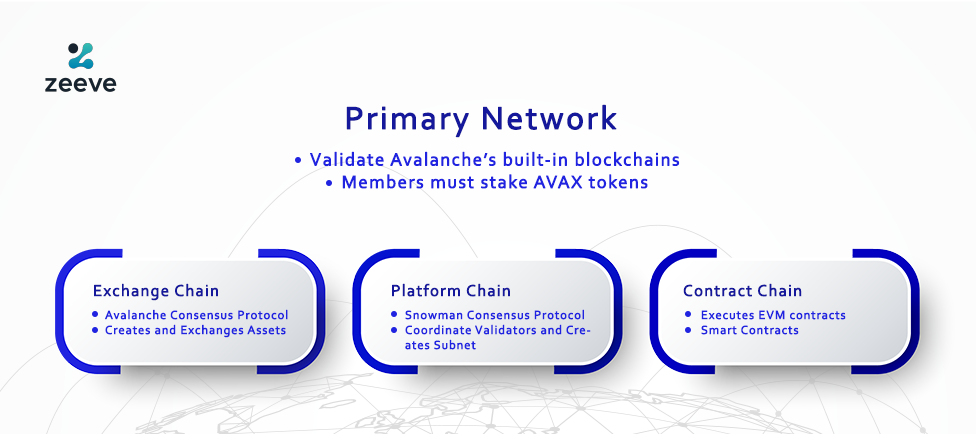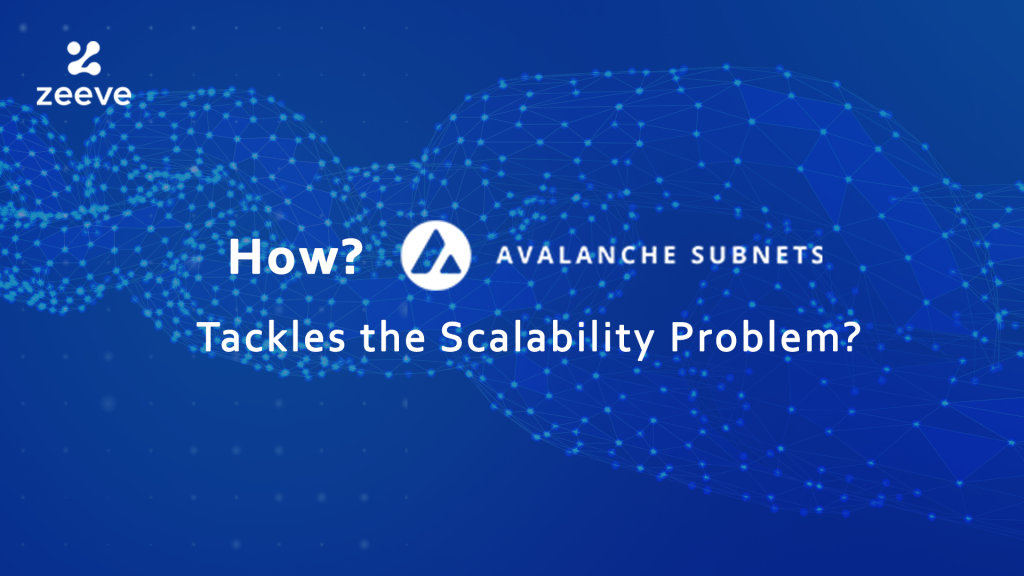Avalanche is an open, programmable smart contracts platform for decentralized applications (DApps) that has witnessed tremendous growth over the past years. At its ATH, it had over $12 Billion in Total Volume Locked (TVL) and over 80,000 daily active users, making the ecosystem one of the biggest hubs for DeFi outside of Ethereum.
Avalanche is a game-changer blockchain aiming to tackle the scalability problem with its state-of-the-art L1 (Formerly known as Subnets) architecture. Avalanche L1s (Formerly known as Subnets) allow developers to create sets of blockchains or customizable blockchains that are validated by Avalanche validators.
However, the scalability problem is one of the most significant barriers for every blockchain, which several developers have attempted to solve. The article will provide insights into the scalability problem and spotlight how Avalanche has resolved it through L1s (Formerly known as Subnets). Let’s get started.
The Scalability Problem
Blockchains are classified into Layer 1 (L1) and Layer 2 (L2), where L2 blockchains address the specific problems that an L1 blockchain cannot cope with. Hence, L2 blockchains are placed above the earlier blockchains.
One of the oldest blockchains, Bitcoin, could fairly process transactions in its early days. But as it started coming to the limelight and more users began using the network, keeping it cheap and fast became relatively tricky.
According to Wikipedia, scalability is the property of a system to handle growing amounts of work by adding other resources to the system. However, the popularity of bitcoin led to a decline in the speed of transactions and pushed the cost of transactions relatively high.
And why exactly does blockchain face scalability problem? The answer lies in its architecture, as each block can only confine a limited amount of transactions. Since bitcoin has a block size of 1MB, it can only store around 2,759.12 transactions per block. On average, the creation of a new block takes roughly ten minutes.
Coming back to the scalability problem, we need to take into account three components:
- Storage capacity of a block
- The time taken to generate one block
- The volume of transactions it has to handle.
Hence, the above three processes allow bitcoin to handle just seven transactions a second. It leads to an increase in gas fees as the fees depend on the supply and demand of the network. In short, the higher the influx of users, the higher the gas fees with Bitcoin.
Blockchains can only get mass adoption if they become fast and quick to handle transactions without burning a hole in a user’s pocket.
Layer 2 Solutions
Layer 2 solutions were preached as the answer to the scalability problem. While increasing the block size helped to increase speed and reduce gas fees, it was not the solution to all of the issues.
Since then, several complex solutions have emerged in the time being that has been made possible by L2 blockchains. An L2 extends the L1 by carrying out the transactions while benefiting from security and decentralization.
Rollups are the most common L2 scaling solutions that L1 uses to export the work of processing transactions. After this, the L2 communicates the transaction data back to the L1, which gets written on the blockchain. Although Layer 2 offers the same security as the main chain, developers need technical know-how to develop an L2 solution.
Web3 ecosystem is bringing P2E games for users to play & earn at the same time. However, L2 would make it challenging to bridge tokens and NFTs to the main chain and pose a problem for companies to deploy the chain in a short time.
Hence we need to bring a solution for developers and companies to look up to. But before diving into the answer, it is imperative to understand the present state of the Avalanche.
What is the current state of Avalanche ?
Avalanche mainnet comprises of 3 chains: P-Chain (The Platform Chain), C-Chain (The Contract Chain), and X-Chain (The Exchange Chain). This activity on the Avalanche network occurs on the primary L1 that consists of all the validators.
X-Chain (Exchange Chain) – is a chain for payments that is optimized for UTXO transfers and NFT minting. Another reason to use the X-Chain is its ability to process the cheaper transfer of assets than the C-Chain.
C-Chain (Contract Chain) – is an EVM (Ethereum Virtual Machine) smart contract chain that enabled seamless creation of exclusive dApps. C-Chain is also the direct interaction point of end-users on Avalanche.
P-Chain (Platform Chain) – coordinates Avalanche validators and creates & manages L1s (Formerly known as Subnets).
The validators are required to validate all the chains (X, C, P), and streamline the connection between the L1s to feel more native.
By adding L1s (Formerly known as Subnets), validators can now validate the added blockchain on Avalanche but why would you create a L1 (Formerly known as Subnets)?

L1s and the advantages it offers
L1 (Formerly known as Subnets) is the famous scalability solution made by Avalanche blockchain. L1s provide the ability to deploy a new pre-built blockchain while reusing the different subsets of the same validators. It is easy to deploy a new blockchain with the help of L1s as it offers less overhead and the ability to reuse the same validators.
Remember when we talked about Web3 gaming in Layer 2 solutions? It makes sense for Web3 gaming companies to use L1s as it makes it easy to spawn new chains without worrying about deployment overhead. Since gaming doesn’t need to compose with other applications atomically on the main chain, L1s are the best bet for developers/companies.
The creation of a L1 (Formerly known as Subnets) on the Avalanche ecosystem requires 1 AVAX token and additional fees. These L1s (Formerly known as Subnets) comprise of several blockchains, distinctive virtual machines, rules sets, and stipulations for participation.
Application Specific L1s
As the user base begins to expand, networks begin experiencing throughput issues. For example, the C-Chain can process ~4500 transactions per second (TPS), which is excessive compared to Ethereum or Bitcoin. However, with the rise in demand for the C Chain, transactions will become slower and more expensive for end-users.
Hence, creating an application specific L1 (Formerly known as Subnets) removes the need to contest with further applications for network throughput. It ensures that your application’s final users will experience fast and cheap transactions. For example, projects can customize their networks to suit their specific needs.
Permissioned & Semi-Permissioned L1s
These L1s (Formerly known as Subnets) are designed to offer privacy and regulatory compliance to organizations. But one can access permissioned L1s only if they have special licenses for the locations. Not only this, but L1s demand validators to meet specific criteria, including high validator uptime, unique hardware resources, and passing KYC checks.
Scalable and Interoperable L1s
Developers can create ZK-rollup and optimistic rollup-based L1s (Formerly known as Subnets) for process-intensive applications (like enterprise-level computation). However, as the L1s continue to grow on the network, it becomes essential to establish communication between them.
Interoperability or cross-chain transfers between L1s (Formerly known as Subnets) are possible with Connext or Wormhole. These L1s allow assets and data to move freely between L1s without transacting via the X Chain.
Implications for Validators & AVAX Delegators
Although developers can create a L1 on Avalanche for scaling the blockchain, they also need to incentivize validators to validate their L1s. One can customize L1s (Formerly known as Subnets) to provide earning rewards in the native token or multiple tokens by validating various L1s with a validator.
Avalanche validators can share out some rewards with their delegators to incentivize more delegations. A common practice involves giving airdrops and better bounties on new L1s (Formerly known as Subnets) to incentivize early validators.
Avalanche’s L1s support a wide range of blockchains, each with special parameters and specifications. L1s (Formerly known as Subnets) allow blockchains to achieve horizontal scaling, i.e., scaling blockchain by multiplying the number of blockchains.
What are the advantages of L1s?
- L1s (Formerly known as Subnets) allow networks to operate freely and reduce the gas fees for users to use dApps.
- L1s allow for customization, where users can use native or multiple tokens for gas optimization.
- Validators may also require to meet specific hardware requirements for the apps to function seamlessly.
- L1s offer robust privacy and regulatory compliance to companies.
- Blockchain can create L1s to utilize Avalanche’s consensus for performance improvement, increase security, and a faster finality.
As a result of these benefits, L1s (Formerly known as Subnets) have caught the attention of major corporate players like Mastercard and Deloitte.
Do we still have issues with blockchain scalability?
L1 (Formerly known as Subnets) functionality will become a prerequisite to curb the scalability issue and build the future of Web3. L1s resolve the most critical issue of scalability observed with previous blockchains and provide a medium for development teams to create as many L1s (Formerly known as Subnets) as they wish.
The rapid advancements will enable the growth of a broader ecosystem and help replace legacy systems that are bygone quickly. Shortly, we can even experience a blockchain handling billions of transactions with more than 1000s of L1s working seamlessly.
About Zeeve
Zeeve is a one-stop destination for deploying Avalanche L1s (Formerly known as Subnets), your own application specific chain using the enterprise-grade Zeeve platform. We offer end-to-end reliable, secure, and scalable services for deploying, monitoring, and scaling nodes.
Use the Zeeve platform to deploy the Avalanche L1 with wizard-based genesis configuration and L1 best practices. Zeeve provides outstanding features such as access to a GUI dashboard, cross-cloud deployments, CICD automation, enterprise-grade uptime, and L1 monitoring.
Zeeve supports major cloud providers with VM based native orchestration strategy. AWS, Azure, Digital Ocean, and Google Cloud are the clouds supported for deploying Avalanche L1. The platform also provides detailed cloud monitoring to maintain the uptime of your L1 infrastructure.
Zeeve is trusted by over 12,000 developers, Blockchain startups, and enterprises for their Blockchain deployments and management. The platform supports the custom configurations for your Avalanche L1 (Formerly known as Subnets), including genesis configs, chain config, tokenomics, white-listing with Avalanche MainNet and Fuji TestNet, and pre-compiles. Sign up now.






















